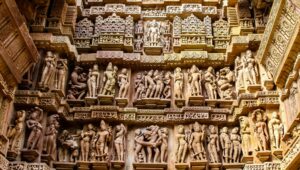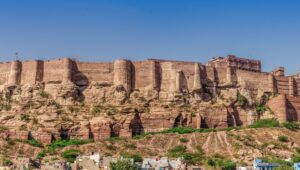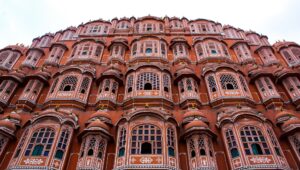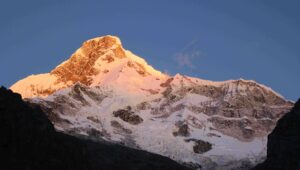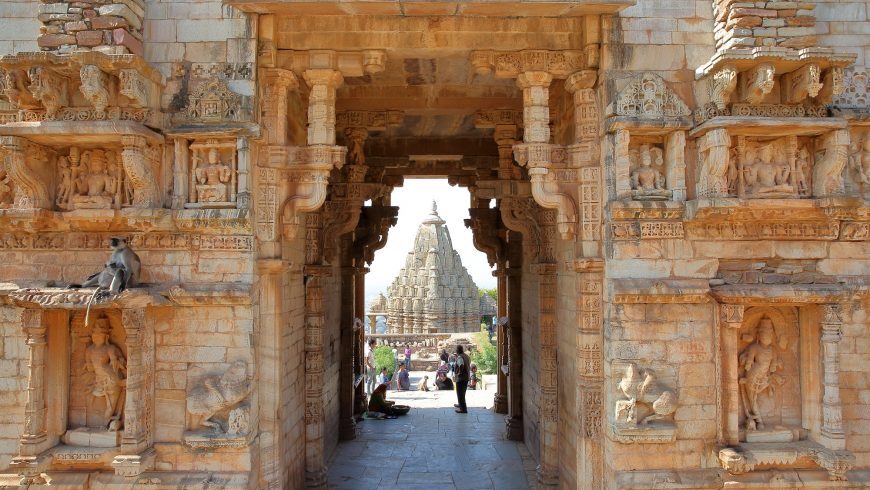Overview
Discover the essence of Buddhism on this comprehensive 10-day tour across India. Start in Delhi, then travel to Lucknow and Sravasti, a site of Buddha’s miracles. Continue to Lumbini, the birthplace of Buddha, and Kushinagar, where he attained Nirvana. Visit Kesariya, Vaishali, and Patna, then explore Nalanda, Rajgir, and Bodhgaya, the site of Buddha’s enlightenment. Conclude with visits to Sarnath and Varanasi before returning to Delhi.
Highlights
- Delhi: Gateway to the tour.
- Sravasti: Site of Buddha’s miracles.
- Varanasi: Significant city in Buddha’s life.
- Lumbini: Birthplace of Buddha.
- Kushinagar: Place of Buddha’s final Nirvana.
- Kesariya & Vaishali: Important Buddhist sites.
- Nalanda & Rajgir: Historic Buddhist centers.
- Bodhgaya: Buddha’s enlightenment site.
Itinerary
Day 1 :
Arrive in Delhi.
Meet the driver in Delhi, And transfer to the hotel. In evening time Take a traditional rickshaw ride in Chandni Chowk, the oldest and busiest market in New Delhi. Chandni Chowk's literal translation- Moonlight Square, was built by a Mughal Emperor in the 17th century. It was divided by canals to reflect moonlight, but now that particular area is closed. It is one of the biggest wholesale markets in India. Over night stay in Delhi Hotel.
Day 2 :
Delhi To BodhGaya airport by flight. (3 Hrs)
Bodh Gaya
Your Buddhist Trail tour begins today. Upon arrival at Gaya airport, you will be greeted by our Holy City travels representative who will transfer you to your hotel. Check-in to your hotel and get relax to comfort yourself from the tiredness of your long tiring journey. Bodhgaya (also written Bodh Gaya) in north-eastern India is the site of the Buddha’s enlightenment and the most important of four main Buddhist pilgrimage destinations known as Uruvela in the Buddha’s time. The two major sacred sites in Bodhgaya are the Mahabodhi Temple and the Bodhi Tree, around which many other temples and monasteries of various Buddhist traditions (Japanese, Tibetan, Bhutanese, Vietnamese, Thai, and others) have been built. Every year, millions of Buddhist pilgrims, mainly from Asian countries, flock to Bodhgaya to be inspired, despite negative karma and earn merit by visiting the holy site where the Buddha became Buddha (“Enlightened one”).
Mahabodhi Temple
In the evening pay a brief visit to the world heritage site of Mahabodhi Temple and drive to Neranchara River, Sujata Village.
Rest of time free for leisure or visit local market. Overnight stay at the hotel in Bodhgaya Hotel.
Day 3 :
Sight Seen in Bodhgaya.
Today after early morning breakfast proceed to visit Mahabodhi Buddha temple and walk around the deer park. Later see the monastery ruins area, Dhamekh Stupa, Archaeological Museum, etc. "Bodh Gaya is the place where Gautama Buddha attained unsurpassed, supreme Enlightenment. It is a place which should be visited or seen by a person of devotion and which would cause awareness and apprehension of the nature of impermanence". Siddhartha Gautama, the Buddha-to-be, had been dwelling on the banks of the Niranjana River with five ascetic followers for six years practicing austerities. Realizing that austerities could not lead to the realization he abandoned them. His five ascetic companions disgusted at his seeming failure deserted him and left for Sarnath. Later visit Mahabodhi Temple, Bodhi Tree, Chinese Monastery, Big Buddha Statue, and Royal Thai Temple etc. Over night stay in Bodhgaya hotel.
Day 4 :
Bodhgaya To Rajgir and Nalanda (80 Kms)
Griddhakuta Peak
After early morning breakfast, proceed for a sightseeing tour of Rajgir and Nalanda. Rajgir was the capital of the Magadh Empire until Ajatshatru moved it to Pataliputra (Patna) in the 5th century BC. Rajgir is an important Buddhist pilgrimage site as Buddha had spent 12 years here and the first Buddhist council after the Buddha attained Nirvana was held here. Visit Ajatshatru's fort, Venuvana, Swarna Bhandar, the Cyclopean wall. Visit the Peace Pagoda on the chair lift. Rajgir sightseeing Includes Gridhkuth Mountain, Venuvan, Hot Spring, Jivaka Amravan, Bimbisar Jail.
Nalanda University Ruins
Then proceeds for Nalanda University. Nalanda founded in 5th century BC, was one of the world’s great universities. Visit the remains of the brick-built Great Stupa and local archeological museum. After lunch drive to Rajgir and on arrival check-in at the hotel.
Rajgir
Rest of time free for leisure or visit local market ownself. Over night stay in Hotel.
Day 5 :
Rajgir To Kushinagar via Vaishali (300 KM/6 Hrs)
Ashok Pillar
After Breakfast proceeds your drive to Kushinagar, En-route visiting Vaishali, Vaishali or Vesali was a city in present-day Bihar, India, and is now an archaeological site. It is a part of the Tirhut Division. It was the capital city of the Vajjian Confederacy (Vrijji mahajanapada), considered one of the first examples of a republic around the 6th century BCE. Gautama Buddha preached his last sermon before his death in c. 483 BCE, then in 383 BCE the Second Buddhist council was convened here by King Kalasoka, making it an important place in both Jain and Buddhist religions. It contains one of the best-preserved of the Pillars of Ashoka, topped by a single Asiatic lion. Over night stay in Kushinagar Hotel.
Day 6 :
Kushinagar to Lumbini (170 KM/3 Hrs).
Kushinagar
Take a early breakfast, Visit Kushinagar, It is one of the four sacred places related to Lord Buddha. Buddha delivered his last sermon, attained Mahaparinirvana (salvation) in 483 BC and was cremated at Rambhar Stupa. The reclining nirvana statue of Lord Buddha inside the temple is 6.10 mt. long and is made of 5th-century red sandstone. Then see other popular attractions like the Indo-Japanese Temple, Burmese Temple, Chinese Temple, Thai Temple, Korean, Sri Lankan, Tibetan temples, 15 Acres Meditation Park, Museum.
Lumbini
Lord Buddha was born at Lumbini while his mother was on her way to a parental home from Kapilavastu. Buddha was born in Lumbini during the full moon day in the month of Vaisakh in 623 BC. He was born under a Sal tree when Mayadevi was going to her maternal town on the occasion of delivery. Upon arrival proceed for a sightseeing tour of this adorable city Lumbini and its temples of Lord Buddha. After sightseeing check into the hotel for overnight stay in Lumbini hotel.
Day 7 :
Lumbini to Varanasi (280 KM/6 Hrs)
Varanasi
After early morning breakfast; check out from your hotel and embark on a drive to Varanasi. Upon arrival check in to Varanasi hotel.
Ganga Aarti
In the Evening Arti Ritual performed by the local priest of the temple at the Banks of Ganga, it is one of the greatest spectacles to experience here. In the evening take a stroll at the narrow lanes and market of Godowlia, here you can shop for souvenirs. Later take a walk at the local market and narrow lane of Banaras city, Glimpse of one of the world’s oldest living cities. You will be able to interact with the local people, ask questions and sample local delicacies. Few tourists ever wind their way through the bazaars in the Northern Gullis of the old city where you will find hidden alleys leading directly through the sacred zone of Banaras to the oldest Ghats of the city. Winding through the street of the Bengalis, visiting hidden shrines and the vistas of life along the riverside to the historic bathing site called Dashashwamedh, the ten-horse sacrifice Ghat. Over night stay in Varanasi hotel.
Day 8 :
Varanasi Sight Seen
Sarnath
Visit the Sarnath, is a place located 18 kilometres northeast of Varanasi near the Ganges and the Varuna rivers in Uttar Pradesh, India. The deer park in Sarnath is where Gautama Buddha first taught the Dhamma and where the Buddhist Sangha came into existence through the enlightenment of Kondanna.
Dhamek Stupa
Then see the Dhamek Stupa, It is situated 12 kilometres away in the village of Sarnath. Here, find the Dhamek Stupa, a massive stone and brick structure that's 43.6 meters tall and 28 meters in diameter. The stupa was built more than 1,500 years ago to replace a structure that dated back to 249 BCE.
Kashi Vishwanath Temple
Visit Shri Kashi Vishwanath Temple. This impressive structure, dedicated to the Hindu deity Shiva, has earned the nickname "The Golden Temple" for its striking spire — plated in some 800 kilograms of pure gold. The distinctive design of this temple has gone on to inspire the architecture of hundreds of other temples across India.
Manikarnika Ghat
Then go head to Manikarnika Ghat, And see the perpetual cremations that happen on this ghat. Hindus believe that Manikarnika Ghat is one of the most auspicious places for the departed to reach moksha (emancipation from the cycle of spiritual rebirth). The funeral pyre at this ghat burns 24 hours, and around 100 cremations take place every day.
Varanasi
Rest of time free for leisure or visit local market own self. Over night stay in Varanasi hotel.
Day 9 :
Departure to Onwards Destination from Varanasi.
Dasaswamedh Ghat
Dasaswamedh Ghat : Early morning proceeds for a boat ride in Ganga River during the sunrise in Varanasi, here you can experience the way of life of their people. Before the boat ride, you may also take a holy dip in Ganga which is the symbol of the faith of spirituality and divinity of this holy Hindu river.
Varanasi
After having your breakfast catch your flight to your home destination with amazing memories of the Buddhist trail tour package.
Day 10 :
Departure
In the morning, transfer to airport to catch flight for onwards destination.
Include
- Air-conditioned vehicle
- Toll Tax,
- Parking,
- Fuel and driver allowance is included.
- 3 Star Accommodation is included in each place.
- Any type of entrance charge is included.
- Nepal border fees is included.
- This product has guide service Breakfast (8)
Excludes
- Delhi to Gaya Air Ticket ₹4,019 per person ($49 Per Person)
- Lunch/Dinner/Drinks




